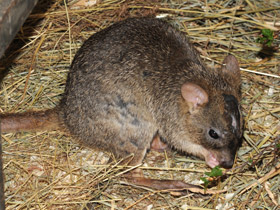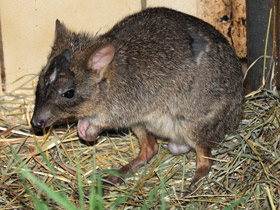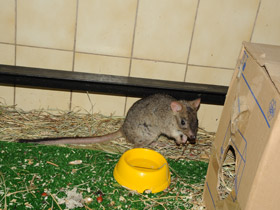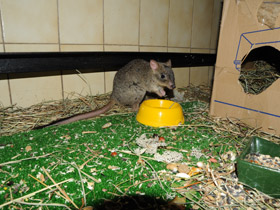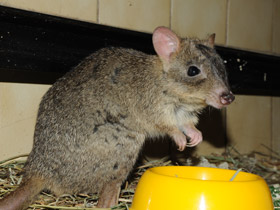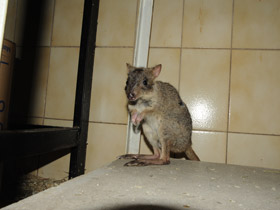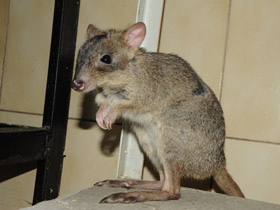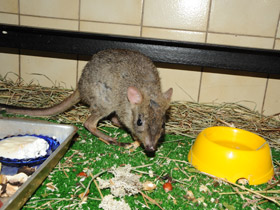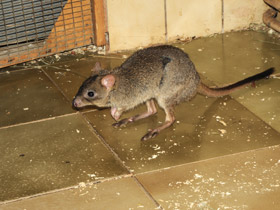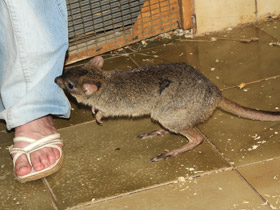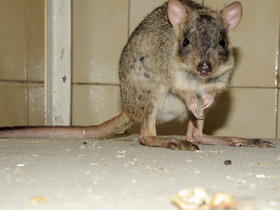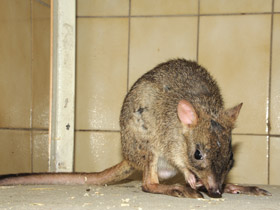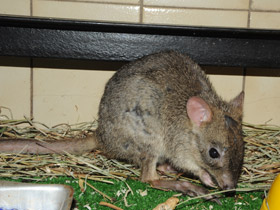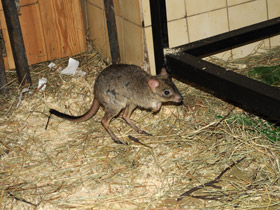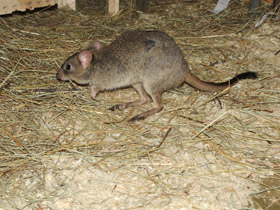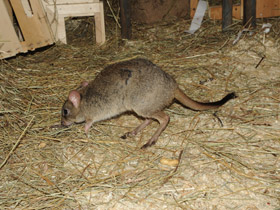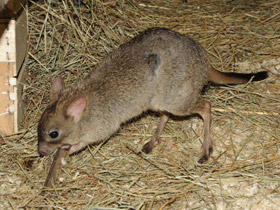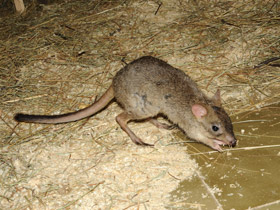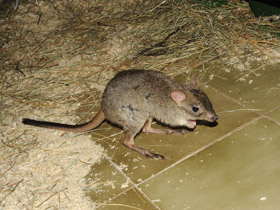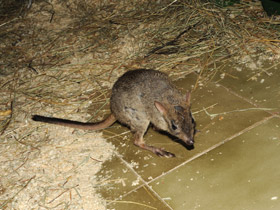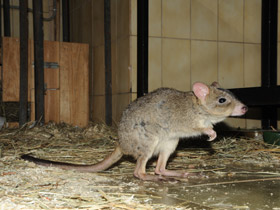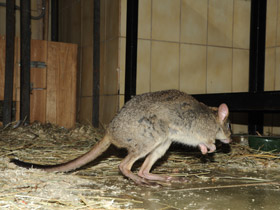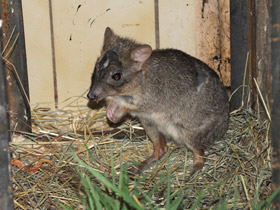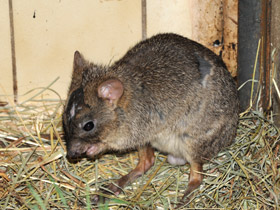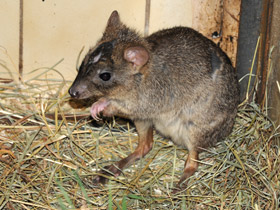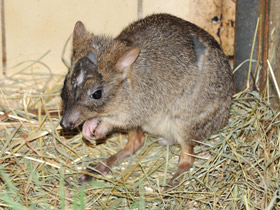The bridled nail-tail wallaby (Onychogalea fraenata), the bridled nail-tailed wallaby, bridled nailtail wallaby, bridled wallaby, merrin, and flashjack
The bridled nail-tailed wallaby (Onychogalea fraenata), also known as the bridled nail-tailed wallaby, bridled nailtail wallaby, bridled wallaby, bridled wallaby, merrin, and flashjack, is a vulnerable species of macropod. It is a small wallaby found in three isolated areas in Queensland, Australia, and whose population is declining. In early 2019 the total population of the species was estimated to be fewer than 500 mature individuals in the wild and 2285 in captivity.
Taxonomy
A specimen was presented to the Linnean Society of London by John Gould in 1840, and published in the society's journal the following year. The date of first publication has been the source of conjecture, and it has been proposed that this was in a 1840 issue of The Athenaeum.
Gould obtained his specimens while in Australia, returning these to England for scientific examination; he gave the animal the common name bridled kangaroo.
Onychogalea fraenata is a species of marsupial diprotodontid of the macropodidae family endemic to Australia.
Also known as flanged nailtail wallaby, flanged nailtail wallaby, flanged wallaby, merrin and flashjack, it is a vulnerable species of macropod. It is a small wallaby found in three isolated areas in Queensland, Australia, and its population is declining. At the beginning of 2019, the total population of the species was estimated to be less than 500 mature individuals in the wild and 2285 in captivity.
Description and particularities
This macropodid can measure up to one metre in length, half of which is its tail, and weigh from 4 to 8 kilograms, with males being larger than females. It has two white, flange-like lines running down the back of the neck, across the shoulders and ending under the arms, separated by a black dorsal stripe. It also has cheek stripes, although these are common in other wallaby species. Another distinctive feature is the tip of the tail with a horny spur, which is 3 to 6 millimetres long. The use to which the animal puts this spur is not yet known.
Behaviour
The species feeds on grasses and other low grasses, depending on their abundance, which it does at dusk and at night. It sleeps during the day, usually next to fallen trees or thick bushes. They are shy and solitary animals, but occasionally form groups of up to 4 individuals, which feed together when grass is scarce.
Males have territories of about 65 hectares, which are three times the size of females.
In captivity, reproduction is not seasonal, with oestrus cycles every 30-45 days, and a gestation period of 21-26 days. The pups emerge from the marsupium when they are about 4 months old. Females reach sexual maturity between 5 and 9 months of age, and males between 9 and 14 months.
Conservation
The species was long believed to be extinct, with no sightings since the 1930s. In 1973 it was rediscovered near Dingo, Queensland. Wild populations can be found within the Idalia and Taunton National Park reserves. In 1994 the total population was estimated to be between 400 and 500 live individuals, and has maintained a positive growth rate. The area it now occupies is less than 5% of the area it occupied before European colonisation of the island. Its decline seems to have been caused by the deterioration of its environment.

















